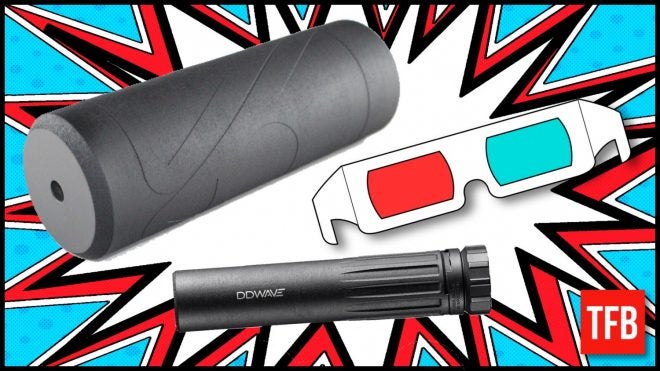Tea. Earl Gray. Hot. Someday I want to turn to a space in my kitchen wall and utter those words – and get results. In my barn, however, I someday want to turn a space in the wall and speak “Silencer. 5.56mm. Length six inches. Diameter 1.75 inches. Mount threading 1/2 x 28.” and come back to find a new rifle suppressor made in a few moments. Although this process is unlikely to happen in my lifetime, Additive Manufacturing is posed to make a leap within the firearms industry – specifically within silencer manufacturing.
A loyal reader sent this report into TFB and although it is a broad overview of the state of the state concerning 3D printing, I definitely found it worth while. Excerpts can be found below.

Metal Additive Manufacturing and Firearms – An Intersecting Opportunity
For additive manufacturing, the powder bed fusion process is already well positioned to advance the technical performance and quality of firearm silencers, and a number of commercial production applications have now begun in this area.
Powder bed fusion technology is a strong fit for silencer production in two key ways.
First, many of the materials that have already been qualified for use in the process are also industry standard materials in subtractive or traditional silencer production. Second, and more importantly, the alleviation of design constraints associated with subtractive machining technologies can improve silencer value in vital areas including overall weight and back-pressure performance, translating into more effective sound reduction, durability, and shooting performance. Firearm silencers work because they allow for a controlled expansion chamber for gases exiting the barrel of a firearm which is a primary cause of explosive noise. By allowing for the manufacture of very complex geometries, a superior control of gaseous expansion can be achieved, while also optimizing weight without added machining time.

Credit: Laserline GmbH
The phenomenon of back-pressure in silencers can also be addressed through the design freedom afforded by additive manufacturing. Back pressure refers to gases escaping rearward toward the user of a firearm as the result of using a silencer to control and slow the expansion of gas out of the barrel. Back pressure can increase wear on a firearm, and on common rifle platforms such as the AR-15 or M4 can also disrupt the shooter by escaping the rifle near the shooter’s face.
Additive manufacturing allows for more complex internal geometries in the silencer baffles, which are designed to slow and control gases escaping the barrel. This design freedom can be applied to reduce rearward escape of gas, while also potentially allowing for improved sound attenuation.

Shown above, SmarTech estimates the annual worldwide demand for firearm silencers, in aggregate of both military and civilian markets, for two adoption scenarios. In red, potential demand is modeled based on the current market situation in the U.S. where firearms silencers remain a Class III NFA item with extensive regulatory requirements for civilian ownership. In blue, a second scenario is modeled that assumes a deregulation scenario for civilian ownership of silencers in the U.S., such as the passing of the Hearing Protection Act or similar legislation in late 2017 to mid-2018.
For now, metal AM technologies such as powder bed fusion will see continued growth in silencers—with potential for major growth pending legislative efforts in the Hearing Protection Act, SHUSH Act, and increased military adoption. In the future, the groundswell of new AM processes would do well to target firearms-related applications with cost-effective production of parts in 7075 and 6061 aluminum yielding metallurgical quality at least as good—if not exceeding—metal injection molding processes. With these two growth factors in play, SmarTech Publishing anticipates that adoption of AM by the broader firearms industry could generate up to $1B in opportunities over the next decade.
Additive manufacturing allows for more complex internal geometries in the silencer baffles, which are designed to slow and control gases escaping the barrel. This design freedom can be applied to reduce rearward escape of gas, while also potentially allowing for improved sound attenuation.
For now, such applications to improve silencer performance definitely come at a cost—the few commercially available additively manufactured silencers are among the most expensive on the market today. The average cost of production silencers on the civilian market (which do not differ significantly from those utilized by the military) is between $600 to $900, while additively manufactured silencers such as the DD Wave and Delta P Design Brevis start around $1,200 and increase up to $2,000 in some cases.
However, the silencer industry isn’t the only one that is facing enormous change. Metal AM technologies are also expanding into new areas, with new processes seeking to bring down costs while expanding the available material sets and applications to possibly move adoption of AM for firearm applications beyond just silencers.
To read the full report, sign up for Smartech Publishing’s newsletter here (copyright guidelines).
 Your Privacy Choices
Your Privacy Choices
